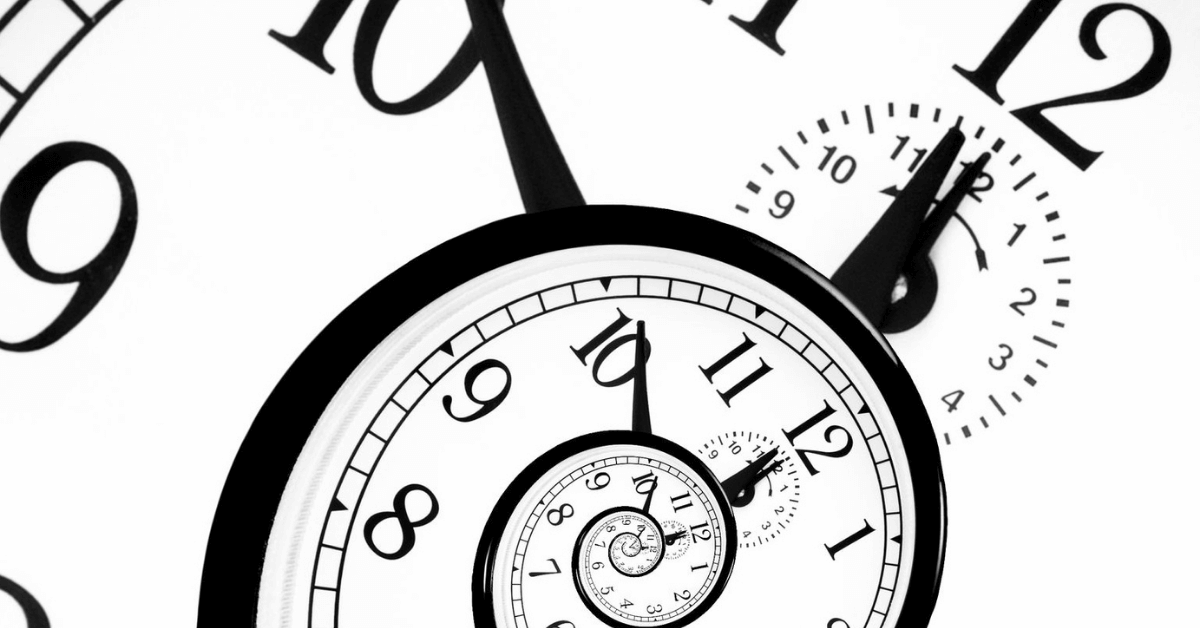November 11, 2020

Time Poverty: A Growing Stress for Modern Society
I’m late, I’m late, for a very important date. No time to say hello, good-bye, I’m late, I’m late, I’m late, I’m late, and when I wave, I lose the time I save.
My fuzzy ears and whiskers took me too much time to shave. I run and then I hop, hop, hop, I wish that I could fly. There’s danger if I dare to stop, and here’s a reason why:
I’m over-due, I’m in a rabbit stew. Can’t even say good-bye, hello, I’m late, I’m late, I’m late.
The above original lyrics sung by the white rabbit in Alice in Wonderland capture “time poverty,” now ubiquitous in modern civilization. Current persistent pandemic stress aside, overall happiness of citizens in modern society has not grown in proportion to overall economic growth. This dichotomy of material prosperity, uncoupled from increased happiness, has been named the Easterlin paradox after the phenomenon was described in the 1970s by University of Pennsylvania economist Richard Easterlin. [1]
Having too many things to do and not enough time to do them is a definition of time poverty. Academicians advocate for a better measure of happiness in a Harvard Business School working paper entitled, “Beyond Material Poverty: Why Time Poverty Matters for Individuals, Organizations, and Nations.” [2]
The profound effects of time poverty include higher levels of anxiety, depression, and stress. Joy, laughter, happiness, and productivity all decrease. Health and wellness worsen, and pleasurable activities disappear including exercise. Because these sad people share their unhappiness, they are more likely to have fewer meaningful relationships, and have higher divorce rates.
People of all socioeconomic strata suffer from time poverty. Unfavorable social determinants of health (SDOH)— food insecurity, housing inadequacy, safety concerns, transportation challenges, and medical shortages—all contribute to time poverty. The lack of time in turn exacerbates the stresses of inadequate SDOH, thus creating a negative vicious circle.
Correcting the SDOH, clearly an admirable goal, unfortunately does not create the opposite of time poverty, namely time affluence. Workers at all levels in many countries complain that they never have enough time to accomplish their baseline functioning let alone their aspirational goals. [3]
“Busyness,” is seen in some circles as productivity, success, and high status. Being tethered to a digital device while responding to an avalanche of emails can adversely affect subjective well-being including mental health, work performance, relationship quality, life-satisfaction, and creativity. Monetarily wealthy people are not exempt. All levels of working people can suffer.
Time poverty is exacerbated by current culture. The “fear of missing out,” facilitated by digital connectivity, creates an “always on” mentality. Fatigue sets in systematically, lowering life satisfaction. Changes in social structures have also accelerated. The nuclear family pictured in “Ozzie and Harriet” or “Fathers Know Best” are almost an anachronism. Working for the same company or job over a lifetime is uncommon, with the average worker changing jobs twelve times over his/her working years. [4] Divorced and blended families are as common as traditional nuclear families. [5]
How does happiness relate to SDOH and time poverty? A Gallup Poll in 2011 showed 70% of employed Americans reported they “never had enough time.” In 2018 a similar survey showed an increase to 80% of respondents stating they do not have enough time to do all they want to do each day. “This situation is so severe it could even be described as a ‘famine’—a collective cultural failure to effectively manage our most precious resource, time,” to quote Ashley Whillans in a recent HBR article. [6]
Time affluence is a dominate influence of happiness. In fact, one of the nine Blue Zones Project principles is work/life balance. People who are more time affluent have greater psychological well-being. Protecting free time, with nonexistent side effects, may be one of the best medicines one has for mental and physical health. A change in lifestyle may have an initial uncomfortable time period needing accommodation; but as soon as positive feedback starts, the on-going healthy change will be enjoyable, becoming the new normal.
Many people believe making or having more money will make them happy. Financial or wealth insecurity are real concerns that can be exacerbated by time insecurity. Keeping the wealth-time balance healthy is a worthwhile goal. Interestingly, the average number of hours per week worked has dropped from 37.8 hours in 1950 to 34.2 hours in 2017. [7]

Once one has financial security, transforming this asset to offload a disliked chore makes sense. “Outsourcing” shopping, cleaning, laundry, dog-walking, driving kids after school, and other mundane activities creates time but may add a feeling of quilt. Are you missing out on the backseat casual conversations the kids are enjoying among themselves or the interaction with the owners of other neighborhood dogs? Balancing the richness of interaction with the desire to have more time is the dilemma. By the way, dog owners have a longer life expectancy, presumably because they are walking multiple times each day. Employing a dog walker exchanges this positive attribute for time creation.
Maximizing the time created is important. Passive “couch potatoes” are not as happy as active planners. Having weekend plans will create more and better experiences than missing out on events and frittering away time.
Volunteering, socializing, exercising—all part of active leisure— have a more positive effect than passive activities—watching TV, sleeping on the sofa, surfing the internet mindlessly, etc. Savor mealtimes by slowing down the eating, relishing the food, increasing the conversation, and generally connecting with others. The current pandemic has increased the frequency of eating at home. [7] Take advantage of private family time to interact, thus creating more quality time together.
Balancing time poverty versus monetary affluence will remain a challenge in modern interconnected digital society. Civilization has evolved from the creation of “Alice in Wonderland” in 1865, but time poverty persists. Recognizing and addressing the stress will be good for everyone’s health and welfare.
Sources
- “Does Economic Growth Improve the Human Lot? Some Empirical Evidence,” Richard Easterlin, 1974.
- “Beyond Material Poverty: Why Time Poverty Matters for Individuals, Organizations, and Nations” by Laura Giurge, Ashley Whillans, and Colin West, 2019.
- “Stressed Out on Four Continents: Time Crunch or Yuppie Kvetch?” D. S. Hamermesh and J. Lee, Review of Economics and Statistics, 2007.
- “Number of Jobs, Labor Market Experience, and Earnings Growth: Results From a National Longitudinal Survey,” Bureau of Labor Statistics, October, 2020
- “21 Noteworthy Statistics of Blended Families,” Brandon Gaille, 2017
- “Why the Pursuit of Money Isn’t Bringing You Joy—and What Will,” Ashley Whillans, HBR, 2019.
- “The current pandemic has increased the frequency of eating at home,” Food Navigator USA Today, April 2020.





